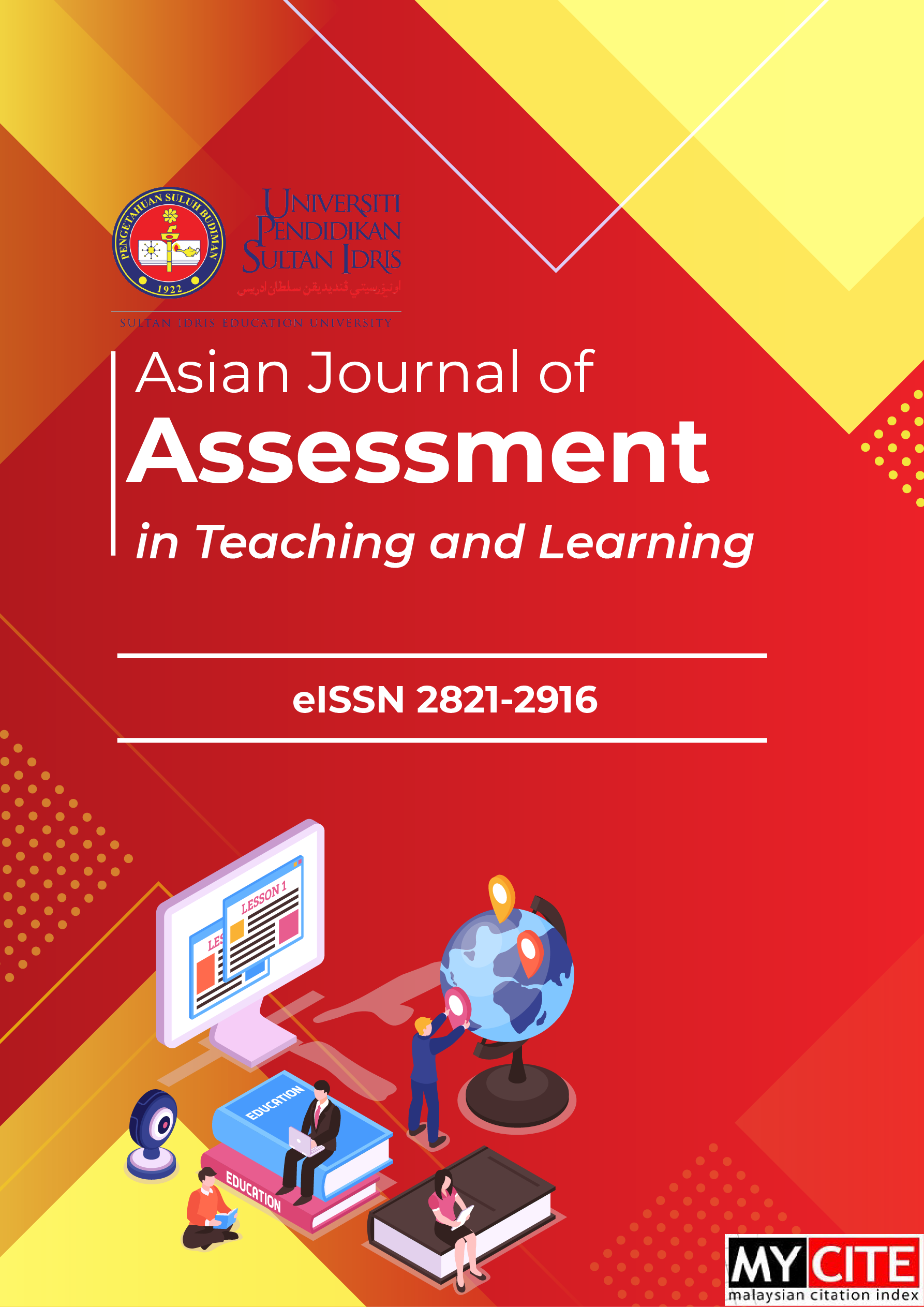The Assessing the Effectiveness of Constructivist Teaching Approaches in Physics Education: Insights from Free Fall Motion Topics
DOI:
https://doi.org/10.37134/ajatel.vol14.2.2.2024Keywords:
Constructivist Teaching, Learning Physics Subjects, Upper Secondary School StudentsAbstract
Physics subjects encompass all aspects of nature on both the macroscopic and submicroscopic levels. It was reported that upper secondary school students in Malaysia have difficulties in some topics in Physics which lead to poor performance of students and a lack of interest in the Science, Technology, Engineering and Mathematics subjects. This research assessed the level of students' knowledge of Free Fall Motion, explored the difficulties faced by the students with Free Fall Motion’s topics, measured the effectiveness of the constructivist teaching approach for students in learning Free Fall Motion, and collecting students' perception towards the constructivist teaching approach. This study used a pretest-posttest research design. The population was upper secondary school students from public secondary schools in Malaysia and 30 students were selected as a research sample in this study Using descriptive analysis and paired sample t-tests, it was revealed that majority of students preferred constructivist teaching approach in learning this topic as significant difference in effectiveness of two constructivist coping techniques, visual learning and contextual learning were observed while, assisting students in managing difficulties in learning Free Fall Motion. In conclusion, the constructivist teaching approach improved student`s understanding of the Free Fall Motion concept, however, because of different perspectives and having to adapt to various methods of learning, not all of the students were interested in applying it in their classroom.
Downloads
References
Akademi Sains Malaysia. (2017). Envisioning Malaysia 2050 : A foresight Narrative. In Perpustakaan Negara Malaysia (Vol. 1, Issue 1).
Diez, D. (2020). Promoting conceptual understanding in high-school physics Exploring the effects of using an audience response system.
Dognia, R., & Dah, M. (2023). Physics students’ conceptual understanding of “gravity and free fall.” Eurasian Journal of Science and Environmental Education, 3(2), 61–65. doi: 10.30935/ejsee/13444
Dosmar, E., & Nguyen, B. A. (2021). Applying the Framework of Fink’s Taxonomy to the Design of a Holistic Culminating Assessment of Student Learning in Biomedical Engineering. 2021 ASEE Virtual Annual Conference Content Access Proceedings, September. doi: 10.18260/1-2--36695
Fazio, C., Carpineti, M., Faletič, S., Giliberti, M., Jones, G., Mcloughlin, E., Planinšič, G., & Battaglia, O. R. (2021). Strategies for Active Learning to Improve Student Learning and Attitudes Towards Physics. Challenges in Physics Education, September, 213–233. doi: 10.1007/978-3-030-78720-2_15
Garalova, M. (2019). The new method of teaching physics. AIP Conference Proceedings, 2075(February), 180004. doi: 10.1063/1.5091401
Ibrahim, N., Damio, S. M., Zulkipli, Z. A., Dalim, S. F., & Yusof, M. M. M. (2022). Epistemological Beliefs and Attitudes towards Physics and Physics Learning among Malaysian STEM Students in Selangor, Malaysia. Asian Journal of University Education, 18(4), 919–932. doi: 10.24191/ajue.v18i4.19999
Jajuri, T., Hashim, S., Ali, M. N., & Abdullah, S. M. S. (2019). The implementation of science, technology, engineering and mathematics (Stem) activities and its effect on student’s academic resilience. Asia Pacific Journal of Educators and Education, 34, 153–166. doi: 10.21315/apjee2019.34.8
Karamustafaoglu, O. (2009). Active learning strategies in physics teaching. Energy Education Science and Technology Part B: Social and Educational Studies, 1(1), 27–50.
Kaushal, R. (2019). Problems Faced by Students While Studying Physics During their High School Years. Vancouver Island University.
Norezan, I., Mohd Aiman, A. Z., & Siti Maftuhah, D. (2019). Attitude in Learning Physics Among Form Four students. Social and Management Research Journal, 16(2), 21–42.
Prasad, G. N. R. (2021). Evaluating student performance based on bloom’s taxonomy levels. Journal of Physics: Conference Series, 1797(1), 012063. doi: 10.1088/1742-6596/1797/1/012063
Raymond A. Serway, C. V. (2018). College Physics. In Cengage (11th Editi, Vol. 01).
Saleh, S. (2021). Malaysian students’ motivation towards Physics learning. European Journal of Science and Mathematics Education, 2(4), 223–232. doi: 10.30935/scimath/9414
Syaharudin, N., Daud, N., Mustamam, M., Karim, A., Wan, S., Wan, N., Nurulhuda, H. &, & Rahman, A. (2015). Misconception and Difficulties in Introductory Physics Among High School and University Students : An Overview in Mechanics Miskonsepsi dan Kesukaran Fizik Pengenalan dalam Kalangan Pelajar Sekolah Menengah Atas dan Universiti : Satu tinjauan bagi tajuk M. EDUCATUM-Journal of Science, Mathematics and Technology, 2(1), 34–47.
Tuwoso. (2016). The implementation of constructivism approach for physics learning in vocational high school. AIP Conference Proceedings, 1778, 030057. doi: 10.1063/1.4965791
Walker, J. (2013). Physics. Pearson.
Williams, M. K. (2017). John Dewey in the 21st century. Journal of Inquiry and Action in Education, 9(1), 91–102.
Ziad, J. P. S. D. M. M. ; K., Nor’azam, M., Kaco, M. F. A., Mohd Idris, H., Zulkefly, F., Mohd, N. R., & Jan, S. M. (2021). An Evaluation of Student’s Perception Towards Learning Physics at Lower Secondary School. Jurnal Pendidikan Sains Dan Matematik Malaysia, 11, 94–106.
Downloads
Published
How to Cite
Issue
Section
License
Copyright (c) 2024 Nor Adilah Zailani, Nurul Raihan Mohd Suib, Ahmad Fuzairi Ahmad Faizal, Megat Mohd Izhar Sapeli, Siti Zulaikha Ngah Demon, Nurkhaizan Zulkepli

This work is licensed under a Creative Commons Attribution-NonCommercial-ShareAlike 4.0 International License.





